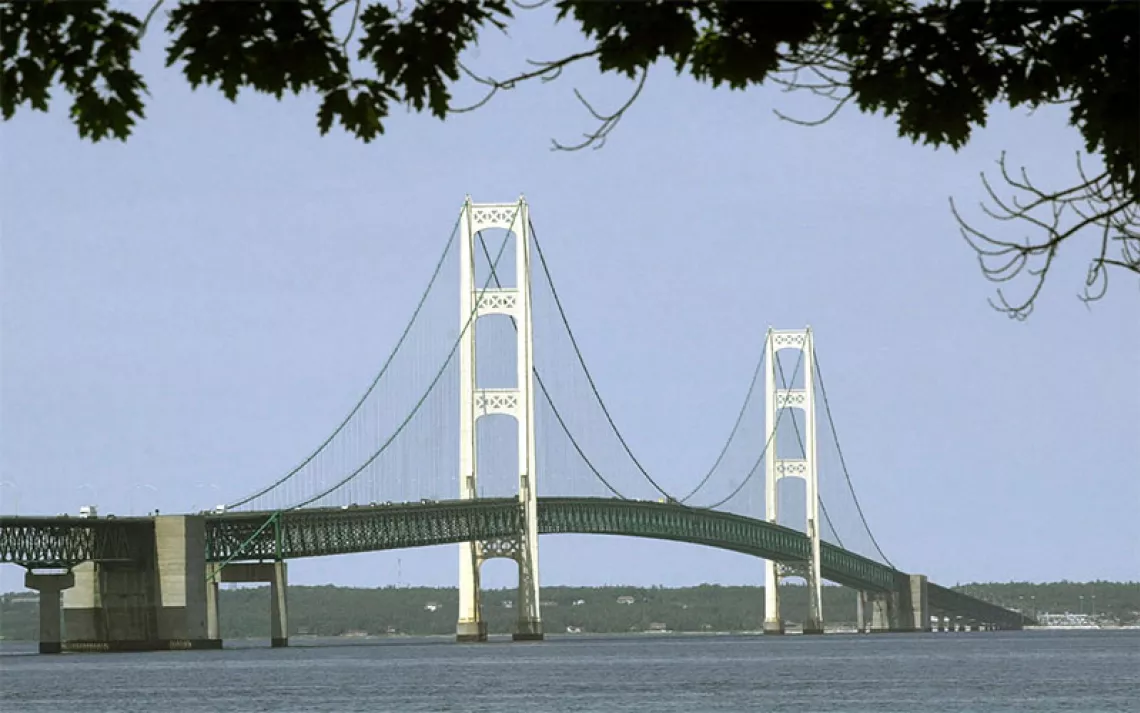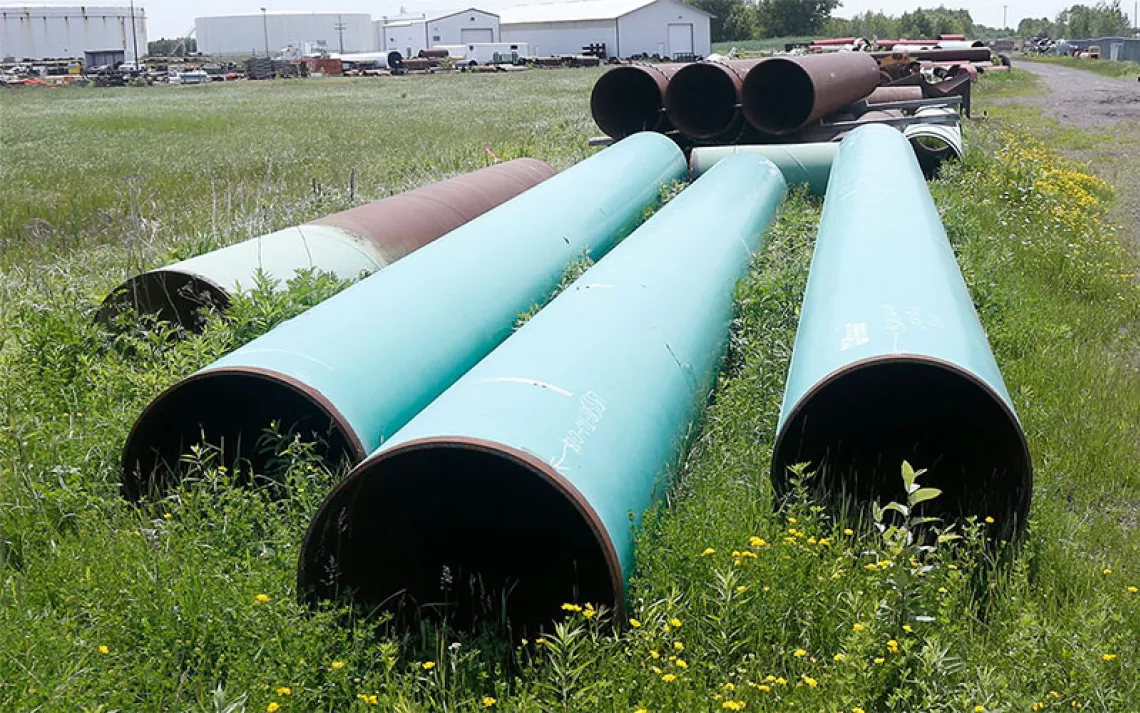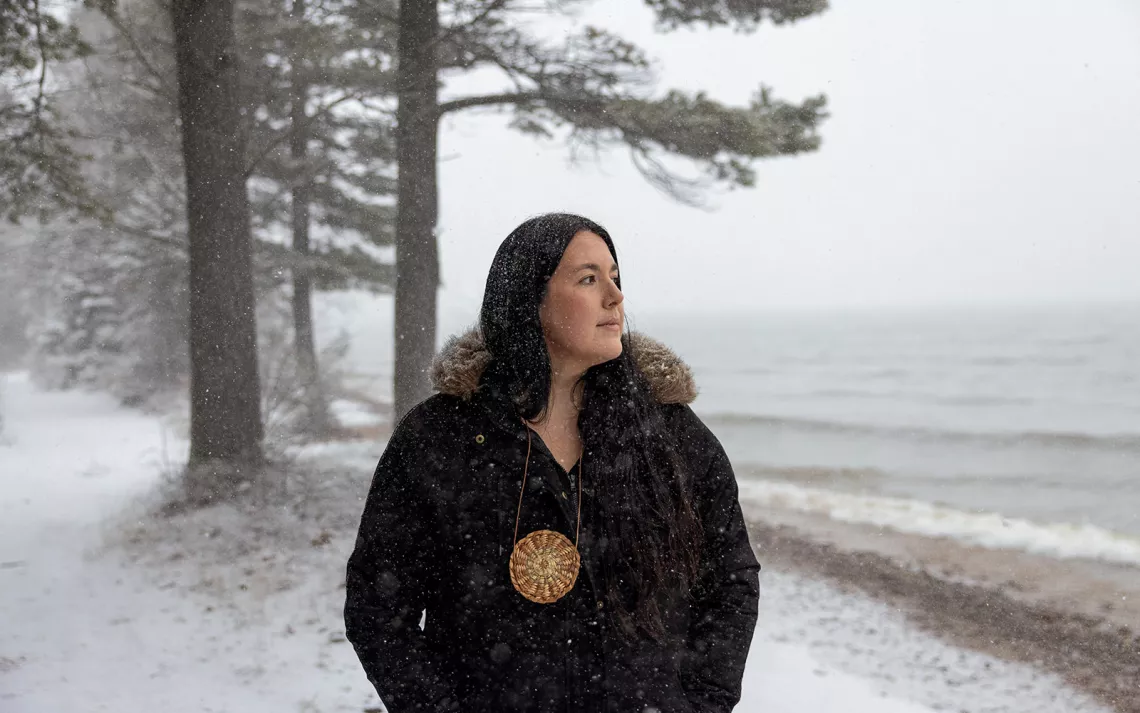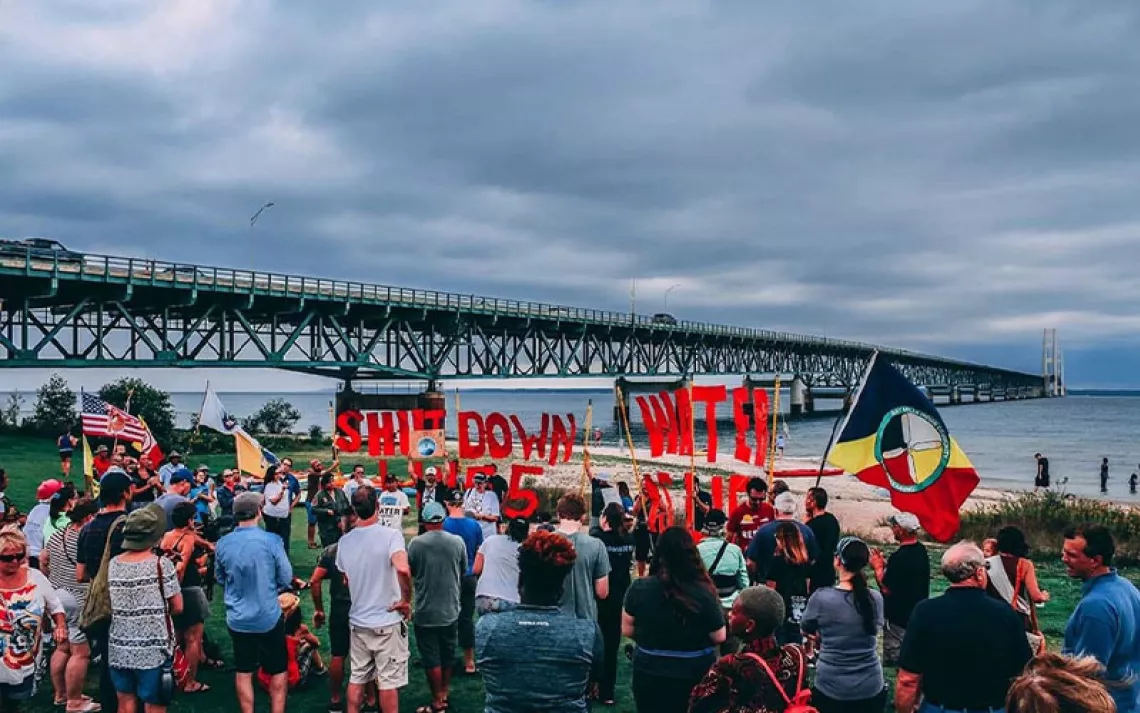New Documentary "Bad River" Details the Fight Against the Line 5 Pipeline
The current battle is just the latest in a saga of Indigenous resistance
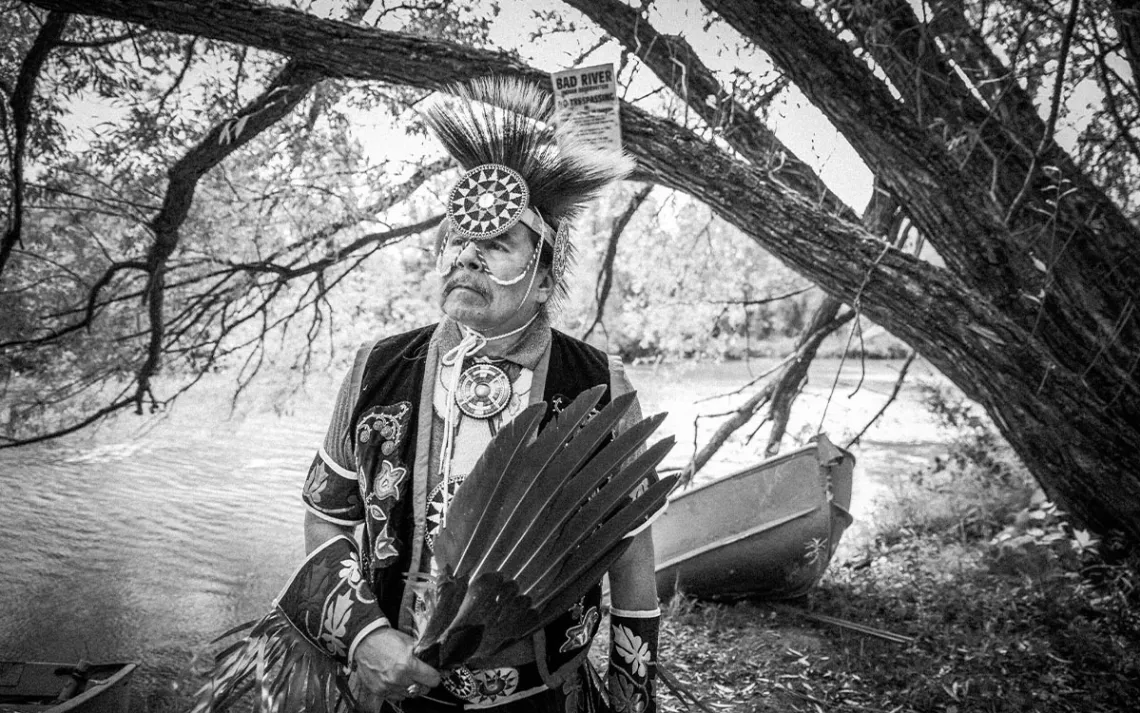
Sonny Smart on the shores of the Bad River. | Photo by Richard Schultz/Courtesy of 50 Eggs Films
One day in October 2018, a helicopter fell from the sky and landed on a remote section of the Bad River Reservation in northern Wisconsin, killing the only occupant, the pilot. The helicopter had been performing an inspection on a portion of Canadian oil company Enbridge’s Line 5 Pipeline, which moves some 23 million gallons of crude oil and other fossil fuels into the US every day. When staffers from the Natural Resources Department of the Bad River Band of the Lake Superior Chippewa went to inspect the crash site, they found that the soil around part of the pipeline had eroded away. About 40 feet of pipeline was exposed, leaving some of the steel conduit hanging in the air. If the exposed pipe had failed, oil would’ve spilled into the Bad River watershed and into Lake Superior.
The story of the helicopter crash is one of the opening scenes in Bad River, a documentary film being released nationwide this weekend. The Indigenous-led campaign to shut down Line 5 is already well known among residents of the Great Lakes and to most environmentalists nationwide, as the long-running campaign has sparked a flood of lawsuits and protests while consistently grabbing headlines. The film—directed by Mary Mazzio and narrated by Edward Norton and the Native model and activist Quannah Chasing Horse (Gwich'in and Lakota)—will hopefully bring the saga to the attention of a larger audience. Packed with interviews featuring tribal members, fascinating archival film, and stunning cinematography of the landscapes of the Great Lakes region, Bad River brings a sense of inspiration to a situation that is distressing and at times shocking.
This film isn’t just about the fight against an oil and gas pipeline. Bad River makes clear that the conflict with Enbridge is only the latest chapter in a long history of Chippewa (also known as Ojibwe) resistance. The Bad River Band of the Lake Superior Chippewa have lived on the shores of Lake Superior for millennia, and the film begins with white settlers attempting to eradicate Indigenous populations. The filmmakers detail the tribe’s experiences with abusive religious and boarding schools, the relocation policies, and the Indigenous-sovereignty movement that exploded onto the US political scene in the 1970s.
Native communities across the country also experienced these traumas, and this information won’t be surprising to anyone with even a basic understanding of American history. The film makes such horrors immediate by telling the story of Bad River elders who ran from federal authorities who searched the reservation for Native children and, later, family members of those who occupied the Bureau of Indian Affairs building in Washington, DC, in 1972 at the height of American Indian Movement activism. These testimonies provide important context for understanding the tribe’s contemporary resistance against Line 5.
The Chippewa territories are a place where water is stitched across the earth. The people live on a land where food grows on water—in this case, wild rice, or manoomin. What drives much of this story is the relationship between the tribe and its lands and waters. The reservation sits on the shores of Lake Superior, what one tribal member calls the grandmother of the Great Lakes. Much of this film is about the work the tribe has put into stewarding the natural resources that benefit both the tribe and larger Lake Superior ecosystem.
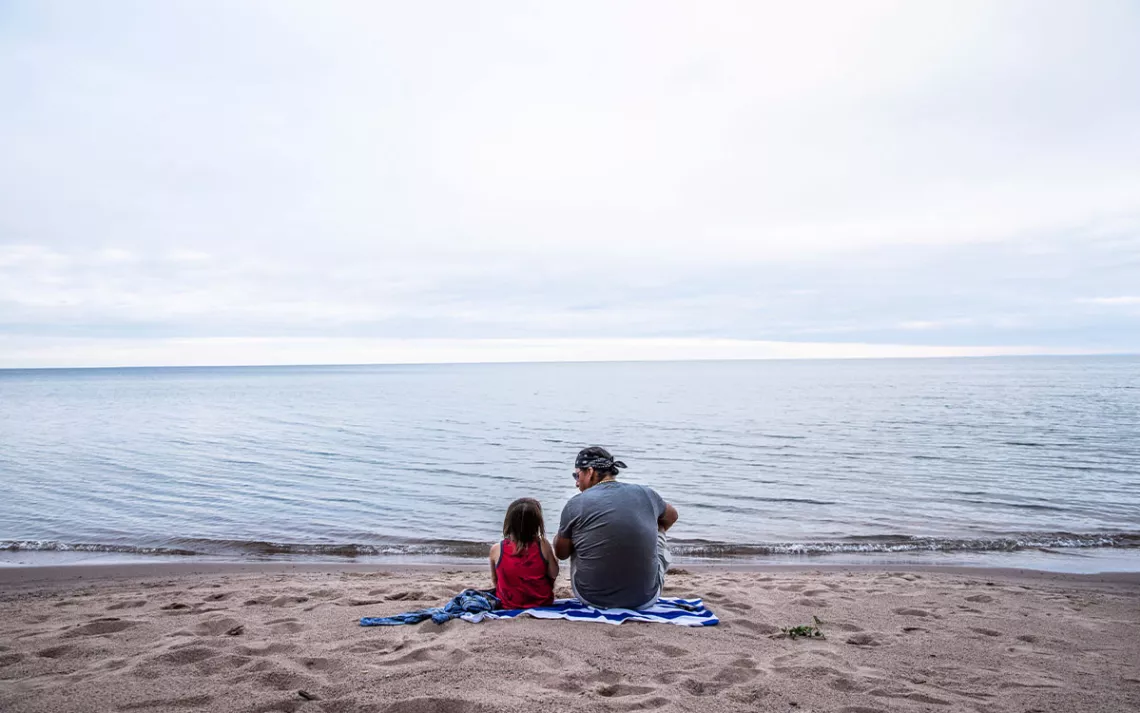
Father and son sitting at Waverley Beach on the shores of Lake Superior. | Photo by Richard Schultz/Courtesy of 50 Eggs Films
Through a string of interviews, Bad River makes clear that the tribe’s relationship with the lands and waters is exactly that—a relationship, where each takes care of the other. “And what we have with our water is so pure,” says Eldred Corbine, a Bad River tribal elder. “We have to protect it, to die for it if we have to.”
Tribal members speak of their experiences during the “Walley Wars,” a period during the '70s and '80s when the Chippewa contested the rights of state fishing and game officials to regulate their hunting and fishing. Those years were marked by conflicts with local white sports anglers and horribly racist incidents. Eventually, though, federal courts upheld the Chippewa’s treaty-guaranteed rights to hunt and fish. As Patty Loew, a tribal member and professor emeritus at Northwestern University, says at one point, “Our people didn’t survive because of generational trauma; we survived because of generational joy and innovation and ingenuity.”
Eventually the film turns to the campaign to decommission the oil and gas pipeline. Line 5 was built in the 1950s to help move fossil fuels from one end of Canada to the other, dipping into the upper Midwest along the way. In 2013, Enbridge’s easement on allotted parcels of land owned by tribal members was set to expire. The company submitted the usual requests to the tribe to continue the easement, but it did so only a few months before the agreement expired.
By then, however, there were mounting concerns within the tribe regarding the pipeline. “It was time that we stood up and said enough's enough,” says one tribal member, Joe Bates. “We want them out.” Especially worrisome to many people was a bend in the Bad River that intersects the pipeline. The meander was getting closer to the pipeline with each passing year and would eventually expose the pipeline to forces that it wasn’t designed for. Tribal members started to fear a repeat of the Kalamazoo River spill, which occurred in 2010 when an Enbridge pipeline burst and created the largest inland oil spill in US history. Bates warned, “Mother Nature is in the business right now of making sure that pipeline gets removed, and she’s encroaching on Line 5 at the meander.”
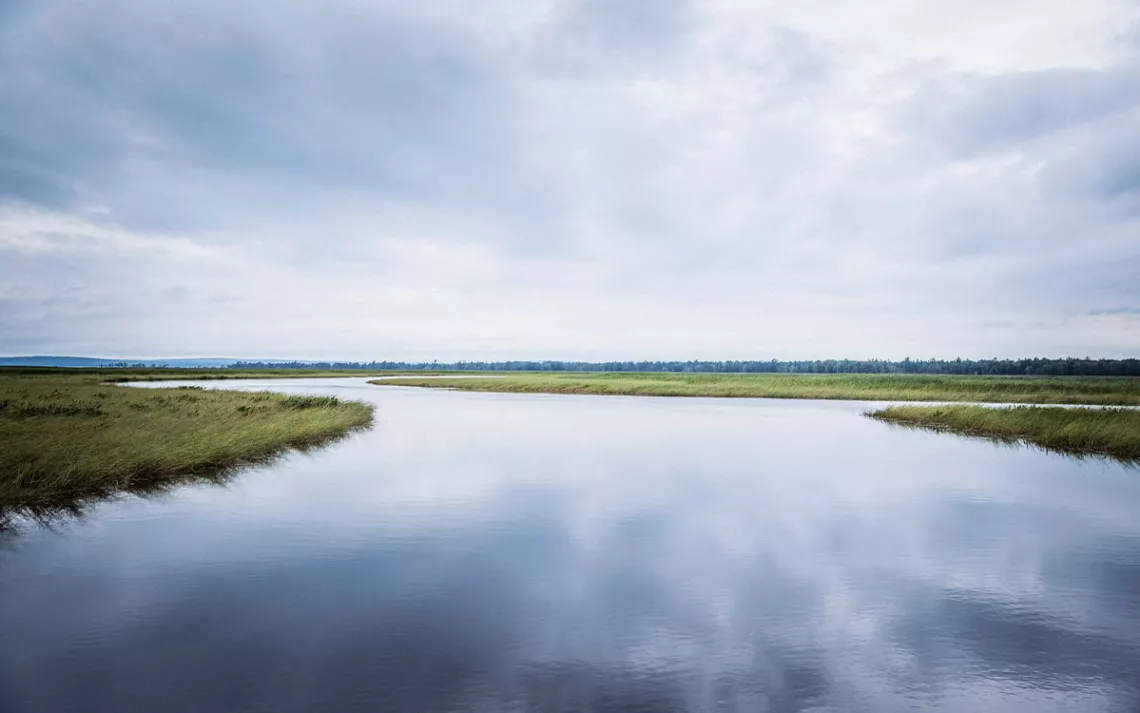
The Kokogan River. | Photo by Richard Schultz/Courtesy of 50 Eggs Films
The tribal council voted in 2017 to not renew the agreement, citing threats to the nation’s natural resources. It was the start of a legal battle that persists to this day. In 2022, a federal district court found that the energy company had been trespassing on the tribal land and ordered Enbridge to pay $5.1 million.
The Line 5 controversy has bounced around the media for years. Bad River succeeds by pulling the various elements of the story together and offering a complete picture of the risks posed by this pipeline. Footage that captures the tribe preparing to enter the federal court drives home how unlikely a victory seemed for the tribe. Outside the courthouse, Bad River tribal members perform a ceremony with their lawyers watching on. They then walk into the courthouse, wheeling carts full of document boxes. The scene is inspiring, though it’s followed by tribal members and their attorney explaining how improbable their victory would be. Enbridge has much more money, allowing them to prolong lawsuits for years. The tribe simply doesn't have these same resources for litigation and lawyers.
But the tribe has achieved a legal win of sorts. Although a federal judge has ruled that the company must remove the pipeline from the reservation within three years, the tribal leaders weren’t completely happy with the ruling, as they wanted an immediate shutdown. In February, a federal appeals court heard arguments on the case.
Tribal members say that the Line 5 struggle is just a new chapter in a very old story. The film isn’t just about a constant fight; it’s about the strength of the Bad River band’s culture, community, and resilience. Toward the end of the film, tribal members share their sense of responsibility and the need to take care of the earth for the seventh generation.
“We’re still here, and we always will be here,” Corbine says.
 The Magazine of The Sierra Club
The Magazine of The Sierra Club
